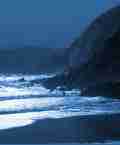 |
Search the site:

 Rose Shaw witnessed life in the Ulster countryside in the early decades of the twentieth century at both ends of the social scale. She was governess to the Gledstanes who lived at Fardross house, near Clogher, Co. Tyrone.
She seems to have been regarded as part of the family and after her charges had grown up she returned annually to the house for a month's holiday in the summer. But, besides being attached to the Gledstane family, Rose Shaw had a great interest and admiration for the labourers and small farmers of the surrounding Clogher Valley, spending much of her time recording their folklore and photographing their way of life.
Between about 1905 and the early 1920's she took many photographs, developing them at Fardross in a windowless room off the dining room that was normally used for storing silver. Unfortunately only about 30 of her photographs seem to have survived. In 1930 she wrote Carleton's country (Dublin) with an introduction by Sir Shane Leslie.
The book, which looked at the country-side and people of the Clogher Valley, where William Carleton had spent his early days, included a number of her photographs. What happened to Rose Shaw after 1930 or indeed where she originally came from is not known but she is still remembered affectionately by older people around Clogher. She succeeded in being accepted by the people she photographed, perhaps partly because they admired her intrepid spirit as she trekked around the countryside with her heavy camera.
These farmers and labourers amongst whom Rose Shaw moved were the poorest section in the countryside. The farmers were smallholders with only a few acres of land and some rough mountain grazing. With domestic industries disappearing an the need for casual labour declining due to increase mechanisation and the change from tillage to pasture, many emigrated because they had little opportunity to supplement their meagre incomes. Another factor in their numerical decline was that people came increasingly to expect a better living than could be made from such small farms.
In addition to casual labourers there were in the countryside full time
unmarried labourers who stayed at their employers' farmhouses, and full time
married labourers, who lived in tied cottages, with perhaps a few acres. Hiring fairs* were held regularly and labourers were engaged by farmers for about 6 months at a time. Wages for labourers improved in the later nineteenth century but their lives remained very harsh and their numbers declined. [* 'Hiring Fairs and Market Places' by May Blair, published by Appletree Press contains a wealth of anecdote and history on these fairs]
Moving around these small farmers' and labourers' homes, Rose Shaw photographed the women in particular. Besides doing household chores, the women helped with potato planting, turf-cutting and haymaking. The heavier work on the farm, such as ploughing and mowing, was carried out by the men, while the women were specially responsible for churning the milk and looking after the poultry. |
[ Back to Top ]
All Material © 1999-2004 Irelandseye.com and contributors



